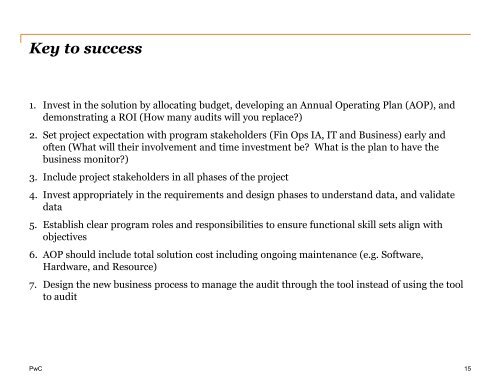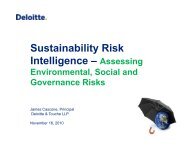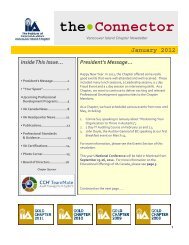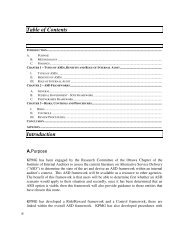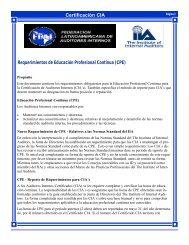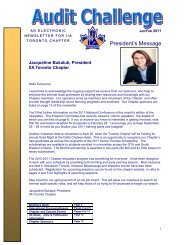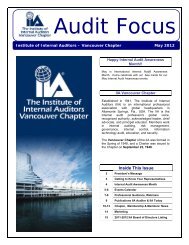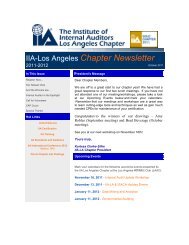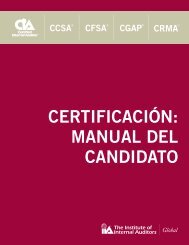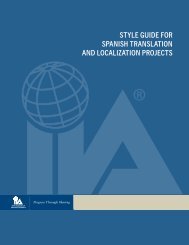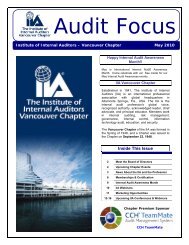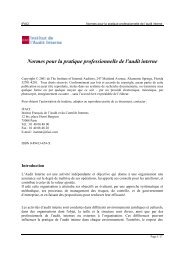Leveraging Continuous Auditing / Continuous Monitoring in internal ...
Leveraging Continuous Auditing / Continuous Monitoring in internal ...
Leveraging Continuous Auditing / Continuous Monitoring in internal ...
You also want an ePaper? Increase the reach of your titles
YUMPU automatically turns print PDFs into web optimized ePapers that Google loves.
Key to success1. Invest <strong>in</strong> the solution by allocat<strong>in</strong>g budget, develop<strong>in</strong>g an Annual Operat<strong>in</strong>g Plan (AOP), anddemonstrat<strong>in</strong>g a ROI (How many audits will you replace?)2. Set project expectation with program stakeholders (F<strong>in</strong> Ops IA, IT and Bus<strong>in</strong>ess) early andoften (What will their <strong>in</strong>volvement and time <strong>in</strong>vestment be? What is the plan to have thebus<strong>in</strong>ess monitor?)3. Include project stakeholders <strong>in</strong> all phases of the project4. Invest appropriately <strong>in</strong> the requirements and design phases to understand data, and validatedata5. Establish clear program roles and responsibilities to ensure functional skill sets align withobjectives6. AOP should <strong>in</strong>clude total solution cost <strong>in</strong>clud<strong>in</strong>g ongo<strong>in</strong>g ma<strong>in</strong>tenance (e.g. Software,Hardware, and Resource)7. Design the new bus<strong>in</strong>ess process to manage the audit through the tool <strong>in</strong>stead of us<strong>in</strong>g the toolto auditPwC15


